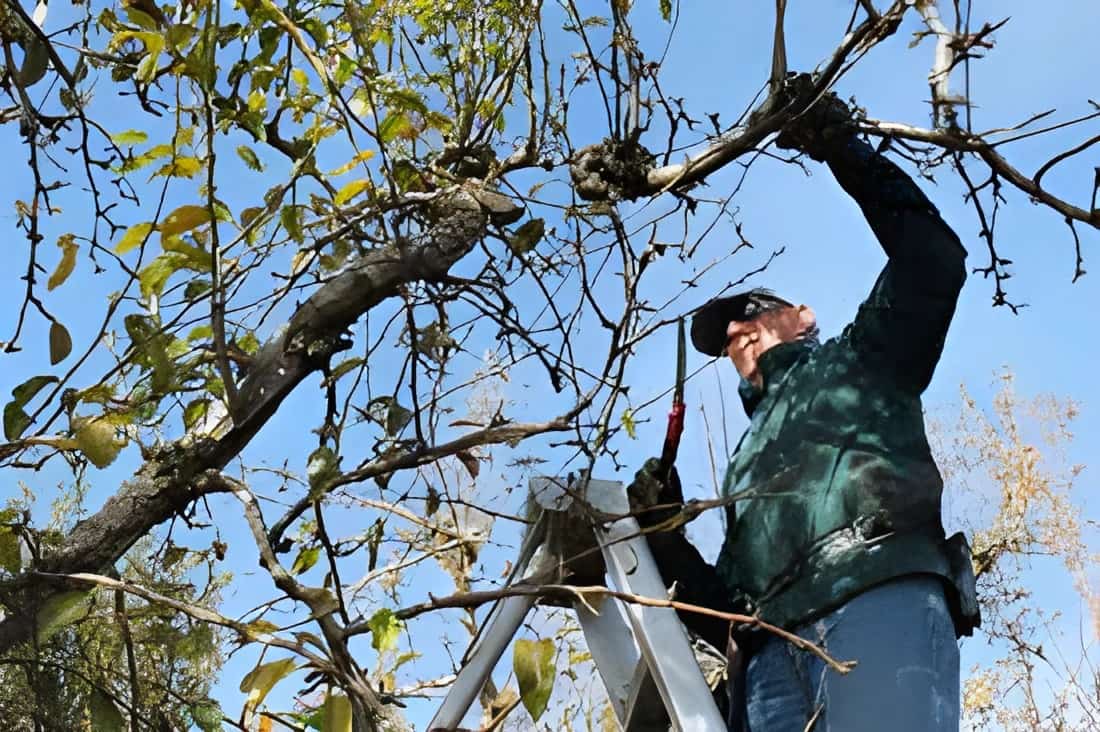Maintaining healthy, beautiful trees requires knowledge of proper tree maintenance calendar practices. One of the most common questions homeowners ask is about tree pruning frequency and the best time to prune trees.
This comprehensive tree care by season guide will help you understand when to cut back trees and provide essential tree trimming tips for year-round health and beauty.
Understanding Tree Trimming
Tree trimming and pruning are vital aspects of tree care that involve selectively removing specific branches or stems.
While many use these terms interchangeably, they serve slightly different purposes within a tree maintenance calendar.
Trimming typically focuses on maintaining a tree’s appearance and shape, while pruning addresses health concerns and structural integrity.
Knowing how often to prune trees depends on various factors, including the tree type, age, health condition, and season.
Generally, most trees benefit from a consistent tree pruning schedule of once per year, though some may require more frequent attention depending on their growth rate and health needs.
Tree Trimming Techniques for Optimal Health
Proper pruning techniques are essential for effective tree growth management and disease prevention. When approaching DIY tree pruning, remember these fundamental principles:
- Clean Cuts: Always use sharp, clean tools to make smooth cuts that heal faster.
- Strategic Removal: Focus on dead, diseased, or crossing branches first.
- Proper Timing: Follow seasonal tree care recommendations for your specific tree types.
- Moderation: Never remove more than 25% of a tree’s canopy in a single session.
The tools for pruning trees should match the job size: hand pruners for small branches, loppers for medium-sized branches, and saws for larger limbs.
Safe tree-cutting practices often require professional assistance for substantial trees or high branches.
Benefits of Regular Tree Trimming
Maintaining a consistent tree trimming schedule offers numerous advantages:
- Promotes overall tree health and pruning benefits by removing dead or diseased portions
- Enhances fruit production in fruit tree pruning schedules
- Improves air circulation and sunlight penetration
- Reduces safety hazards from falling branches
- Creates more aesthetically pleasing landscapes through proper tree shaping tips
- Prevents property damage during storms
- Extends the lifespan of trees through systematic tree disease prevention
Seasonal timing plays a crucial role in maximizing these benefits. Let’s explore the ideal tree care by season approach.
Spring: A Time for Light Trimming
Spring tree pruning should be approached with caution as trees are exiting dormancy and entering their active growing season tree maintenance period. During this time:
- Focus on removing winter damage
- Lightly shape ornamental tree care specimens after flowering
- Address minor structural concerns
- Avoid heavy pruning that could stress trees emerging from dormancy
For flowering trees, timing is especially critical. Those that bloom in spring should be pruned immediately after flowering, while summer-blooming trees can be trimmed in early spring before new growth begins.
Summer: Monitor Growth, but Avoid Major Trimming
Summer pruning advice generally recommends restraint. During the active growing season:
- Limit summer pruning to corrective measures
- Remove obviously dead or damaged branches
- Monitor for signs of disease or pest issues
- Prune spring-flowering trees after blooms fade
Heavy summer pruning can stress trees during hot weather and potentially invite pests. This season is better for observation than action in your tree maintenance calendar.
Fall: A Time for Major Pruning
Fall tree trimming presents an ideal window for more significant work. As trees begin entering dormancy:
- Remove dead, diseased, or structurally unsound branches
- Shape deciduous tree pruning subjects after leaf drop, when the structure is visible
- Prepare a fruit tree pruning schedule for winter
- Clear away hazardous limbs before winter storms
This timing allows trees to heal before winter sets in while reducing disease susceptibility. For many species, fall represents the perfect balance between active growth and dormancy.
Winter: Rest and Recover
Winter tree care focuses on dormant season pruning, which offers several unique advantages:
- Disease organisms are inactive, reducing infection risk
- The tree structure is clearly visible without foliage
- Trees experience less stress when inactive
- Frozen ground may allow easier access to the tree
Dormant pruning is especially beneficial for fruit trees and deciduous specimens. During this off-season tree trimming period, major structural corrections can be made with minimal impact on tree health.
The Importance of Professional Tree Trimming Services
While many homeowners can handle basic tree trimming tips and techniques, certain situations demand professional expertise:
- Large trees require specialized equipment
- Trees near power lines or structures
- Extensive disease or damage management
- Complex structural corrections
- Heritage or valuable specimen trees
Professional arborists understand the nuances of evergreen tree maintenance versus deciduous care and can implement proper pruning techniques that balance aesthetics with health considerations.
Regular consultation with tree care professionals can establish a customized tree pruning guide for your specific landscape, ensuring the right approach for each tree type and condition.

